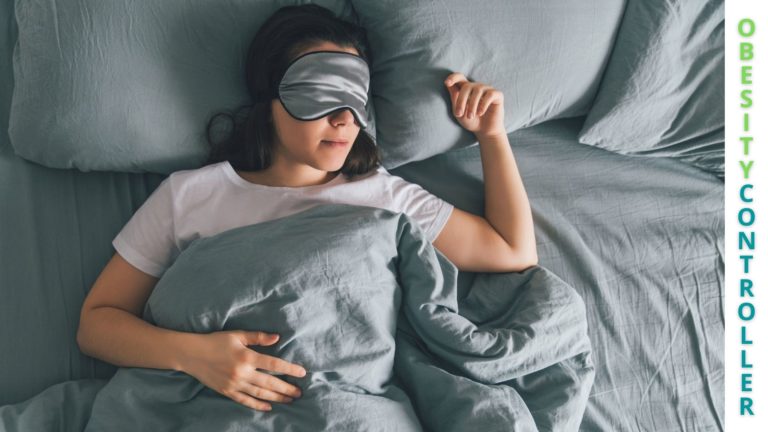An Inside Look At Matt Patricia’s Weight Loss Story – What He Did?

Matt Patricia is an American professional football coach who has coached in the National Football League (NFL) for the New England Patriots. He has been a head coach since 2017, serving as offensive coordinator and interim head coach of the Detroit Lions.
As of 2021, he is looking forward to having a brilliant season with the Patriots and bagging another Super Bowl while waiting for his contract with the Lions to end soon.
Since he began coaching, he has also gained a lot of weight. But He has lost some weight and groomed up in recent days. He is 5 feet 6 inches tall. Take a look at Matt Patricia’s weight loss story.
Matt Patricia’s Weight Loss – His Routine
The biggest difference between Matt’s diet and other diets is that he does not force himself to eat every 2 hours like most people do with calorie counting or following specific meal plans from books or websites. Instead, he eats at regular times every day based on his own schedule rather than following someone else’s rules for eating.
He believes that eating when you feel hungry is the best way to eat because it allows you to choose what you eat rather than having someone tell you what to eat by forcing food down your throat against your will. He also feels that if you eat enough calories then you will lose weight efficiently without having to starve yourself.
“I’ve been eating this way for many years now – it’s just what I prefer! I found that it helped me lose weight without feeling hungry or deprived or tired all the time. And since I’m also walking around 20 miles per week now (mostly on foot), I’m thinking that it will help me keep it off even longer.”

He also added, “I’ve always been pretty health-conscious. I try to eat lots of vegetables and fruit to keep my body working correctly so that I can perform at my best during workouts and everyday activities. Nowadays I try to eat as many fresh foods as possible – whether it be from a market stall or even just an apple from the tree outside my window!”
The best way to keep track of what you eat is by writing it down. It might seem like a pain, but it’s worth it. There are so many ways to do this nowadays: from the old-school paper-and-pencil method to apps like MyFitnessPal, or the Weight Watchers points system. And while they all have their pros and cons, there’s nothing that can beat pen and paper when it comes to tracking what you eat.
“The key thing is that it has to be something that works for you — something that makes you feel welcome and comfortable doing it every day rather than just once or twice a week. Writing down what you eat also helps you learn about your eating patterns and habits. You can see where you’re overeating and why — all without having to open up your bag of chips or take out a ruler. I used a pen and paper for years before trying anything else. Going back through my old journals was an eye-opening experience (especially since I kept them in order by time period). The more I looked at those pages, the more I realized how much I had changed over the years — and how much better I felt because of it!”
- He ate a healthful diet rich in fruits and vegetables, whole grains, lean proteins, and low-fat dairy products.
- He exercises regularly for at least 30 minutes per day on most days of the week.
- He even maintained a regular sleep schedule and avoid screens before bedtime.

“I was following a workout routine that was designed by a fitness trainer. It was very intense and included weight training and cardio, but it wasn’t for beginners. It took me about three months to get into this routine properly.
The first thing I did was add some weights to my arms and upper body. Then I added weights to my legs and back, which made a big difference in terms of strength and endurance.
After about six months of working out regularly every day, I noticed that my clothes were fitting looser than they used to even though I was still dieting regularly (as well as logging and exercising). So I stopped dieting for two weeks so that my body could adjust to being not under stress anymore; then I switched back over to dieting again until my clothes fit better again — which only took another couple of months!”
What matters most is what you eat and figure out your eating style — not how much you weigh or how much exercise you do — because it will determine how healthy your body truly is. And that includes your brain!
He added that he also does an activity that helps him think about health and wellness when other options aren’t available: reading a good book or magazine article. These days there are so many choices out there — from magazines to blogs to podcasts.
Accept yourself just as you are without trying to change yourself or become someone else.
Those who maintained a healthy diet and worked out regularly also reported higher levels of self-esteem and confidence in their ability to maintain a healthy lifestyle after they lost weight than those who did not maintain these behaviors.
Incorporate mindfulness practices into your life so you can be more aware of your thoughts and feelings so they don’t control what happens in your body.
It’s hard to know where to start. So he recommends starting with something that won’t bore you after five minutes or so: pick up an obscure topic that intrigues you but isn’t on everyone else’s radar yet.
Conclusion
Matt Patricia’s weight loss story has inspired everyone. Body image is a serious issue for many people, and we’ve seen many patients who are struggling with it. Many of the patients are concerned about their weight, but most don’t know how to lose weight or maintain their weight loss. They often have no idea what they should eat, or what they should weigh.
It’s important to understand why some people are heavier than others. We all know that genetics play an important role in our weight; however, there are also environmental factors that affect our ability to maintain a healthy weight.
There are three main reasons why we gain weight: calorie intake exceeds energy expenditure (eating more calories than we burn); energy intake exceeds energy expenditure (eating less than we burn), or both calorie intake and energy intake exceeding energy expenditure (eating more calories than we burn AND burning fewer calories than we consume). The first two scenarios lead us to gain weight while the third leads us to lose it!





